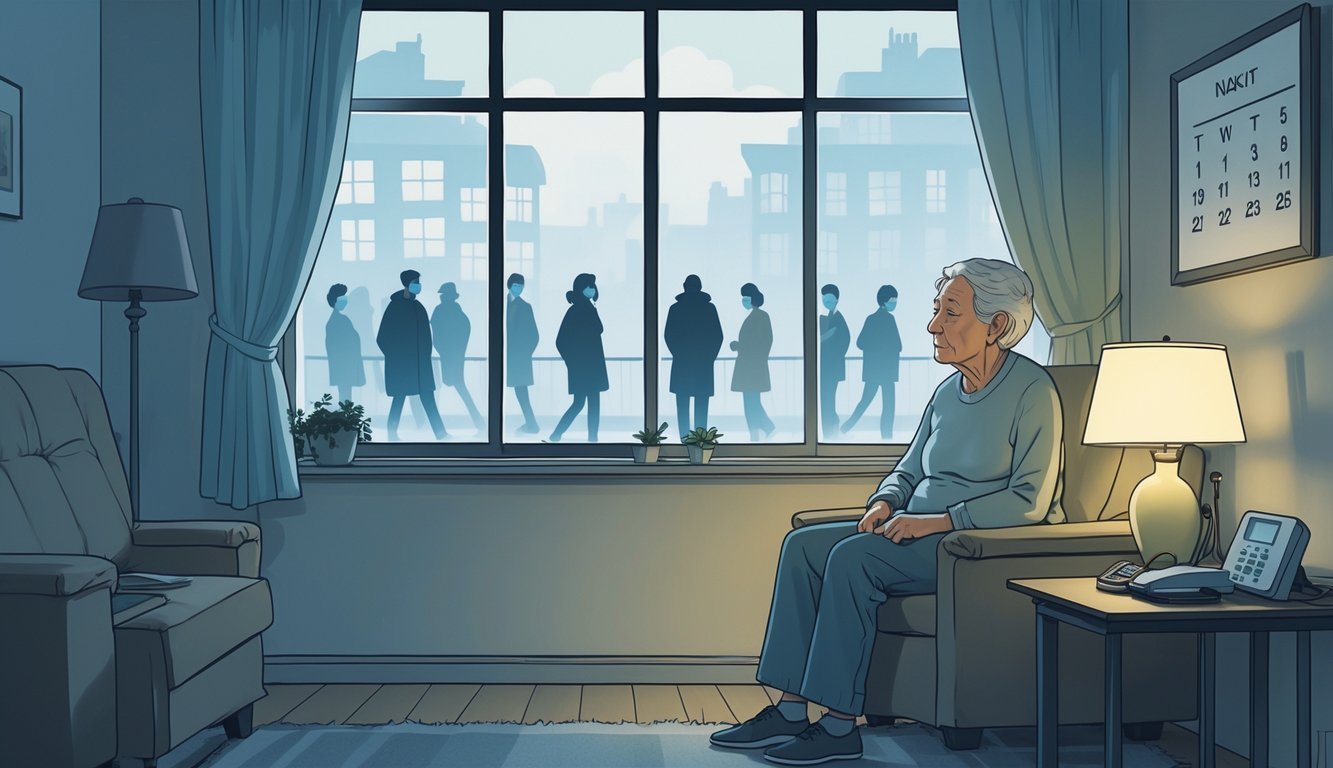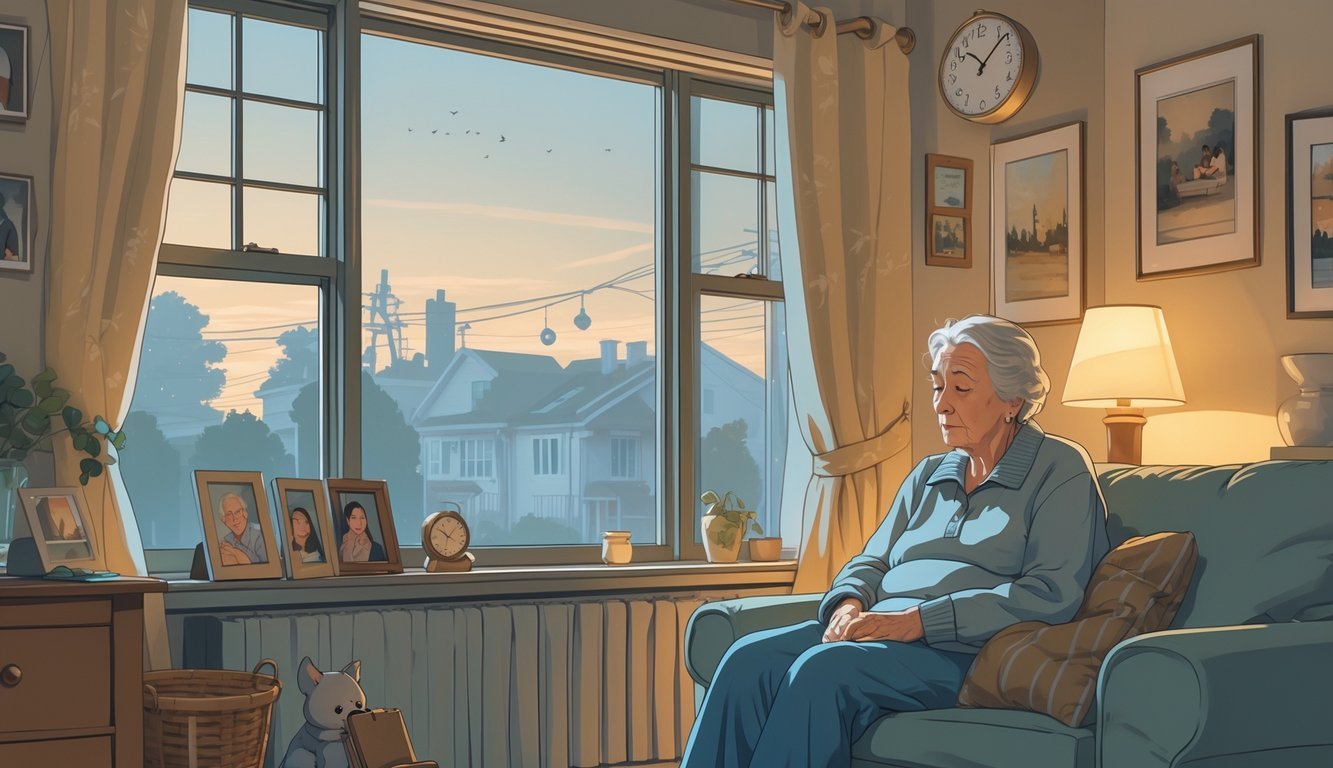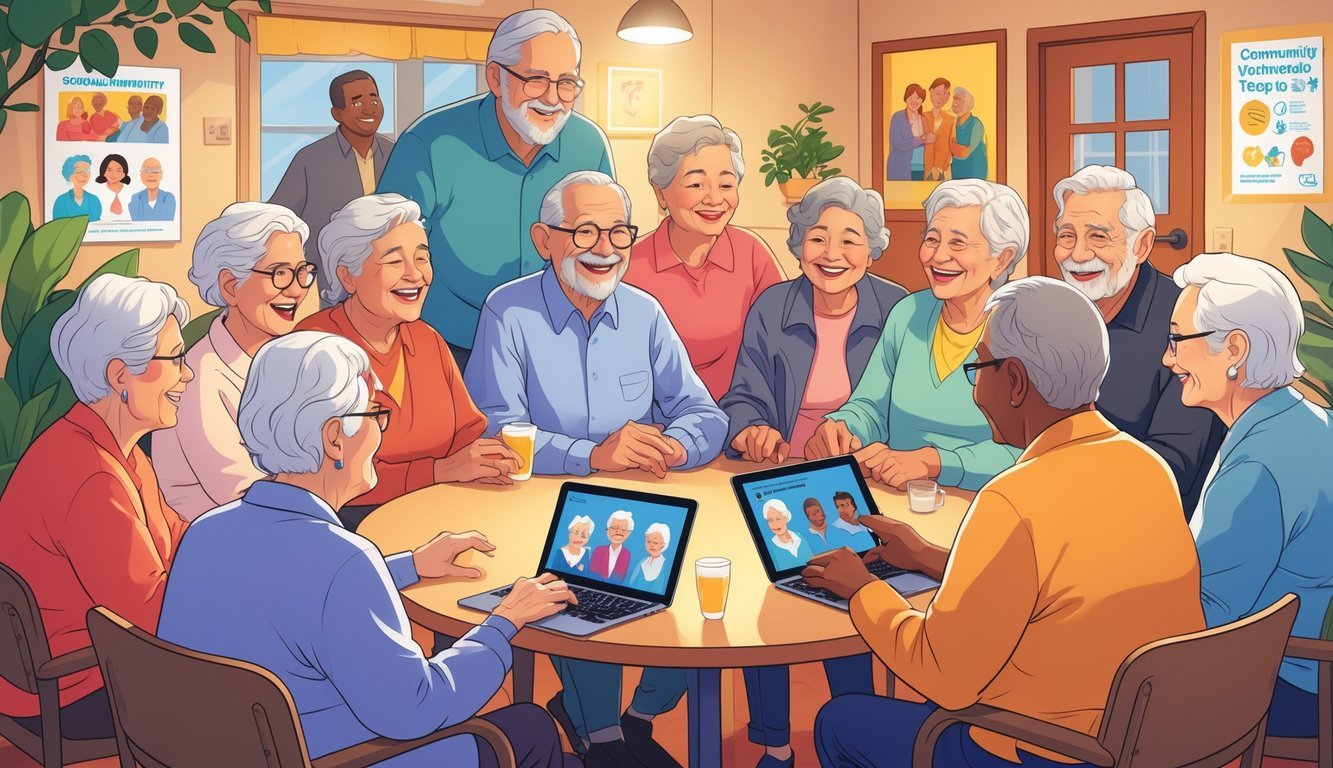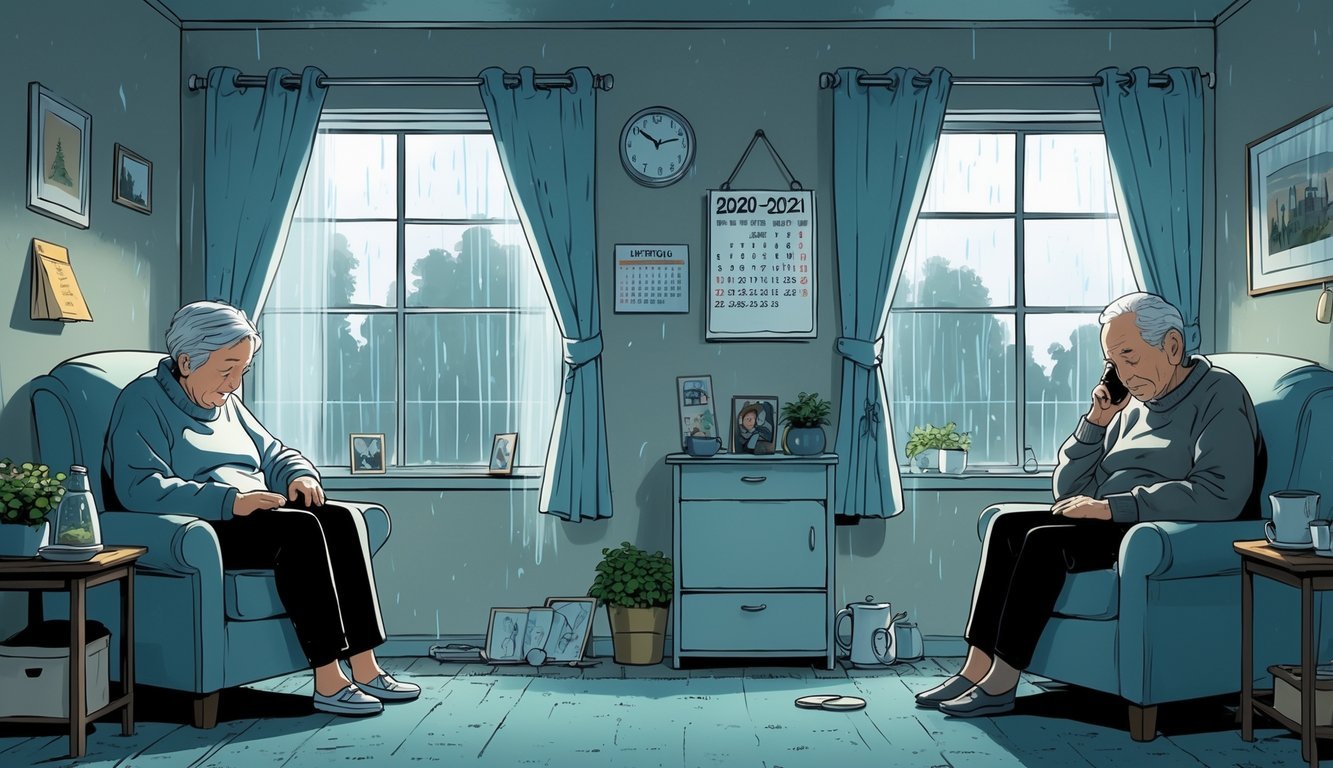PsychNewsDaily Publishers
100 Summit Drive
Burlington, MA, 01803
Telephone: (320) 349-2484
PsychNewsDaily Publishers
100 Summit Drive
Burlington, MA, 01803
Telephone: (320) 349-2484
The COVID-19 pandemic significantly increased feelings of isolation among older Americans, with over half reporting loneliness due to social distancing and reduced social interactions.

The COVID-19 pandemic changed life for everyone, but older Americans really took the brunt of it. A national poll on healthy aging from the University of Michigan found that loneliness among people over 50 actually doubled during the early months of the pandemic.
Before COVID-19, about one in four older adults felt isolated. During the pandemic, that number shot up to more than half.
Why did loneliness grow so much, anyway? Social distancing, fewer group activities, and worries about health kept many older adults away from friends and family.
This wave of isolation didn’t just affect moods—it took a toll on the overall health and well-being of many.
If you want to help yourself or someone you care about, understanding this shift really matters. Knowing more about loneliness can open doors to support and new ways to reconnect, even when things are tough.

During the COVID-19 pandemic, loneliness among older Americans shot up because of social distancing and quarantine. This spike hurt mental and physical health, especially for those already at risk.
If you understand the reasons and the risks, you’re better equipped to spot and address loneliness in your life or in the lives of seniors you know.
Loneliness is that feeling of being alone, even if people are around. Social isolation means you actually have little or no contact with others.
Both were already common for seniors, but things got worse during the pandemic.
Many older adults faced strict quarantine rules. They had fewer chances to see friends or family.
Seniors aged 65 to 74 saw the biggest jump in loneliness, probably because their social activities disappeared. People living alone or in care facilities got even fewer visits, which only made the isolation worse.
Social isolation is linked to poor health, so it’s not just a passing feeling—it’s a real concern as people age.
A national poll revealed that loneliness among older Americans doubled in the first months of the pandemic. About a third of people aged 50 to 80 felt lonely or isolated during this time.
The University of Michigan and the Institute for Healthcare Policy and Innovation (IHPI) dug into this issue. They found that people with health problems felt even lonelier, probably because they had to stay home more.
Even as things have started to return to normal for some, loneliness is still high. Low-income seniors and those with less social support have a tougher time staying connected.
Several things made loneliness worse during the pandemic:
If you know these risks, it’s easier to see why loneliness spiked among older adults during COVID-19.
Loneliness can really mess with your mind and body. Older adults who felt isolated were more likely to struggle with depression, anxiety, and even dementia.
Physically, loneliness is tied to poor health, a higher risk of dying early, and weaker immune systems. The Centers for Disease Control and Prevention (CDC) warns these effects can pile up over time.
Taking care of your social needs is part of staying healthy as you age. Using technology, reaching out to neighbors, or joining safe group activities can all help ease loneliness.

You can push back against loneliness by getting involved in your community and using technology to keep in touch. Trying out social activities, picking up new digital skills, and planning for your health can really help.
If you join local groups or volunteer, you’ll meet new people and feel like you belong. Many communities offer volunteering opportunities, social clubs, and events in parks or gardens—great places to enjoy nature and connect.
If getting around is tough, check out community transportation or public transit services for seniors. They make it easier to reach social spaces and health services.
Being active in your neighborhood lowers loneliness and boosts mental health.
Watch out for ageism, though—it can make some older adults feel left out. You deserve to be included and valued. Programs from groups like AARP work to give you real chances to connect and participate.
Technology can help bridge the gap when you can’t meet in person. Learning basic digital skills, like making a video call or using social apps, helps you stay in touch with family and friends.
If the digital divide worries you, lots of communities offer free webinars and workshops to boost your digital literacy. Public libraries and senior centers often have classes or one-on-one help.
Getting access to technology isn’t always easy. Tablets or smartphones designed for seniors might make things simpler. Staying connected online really does help reduce isolation, especially if health issues keep you home.
Preventing loneliness starts with looking after your physical and mental health. Stay active, eat well, and keep up with regular health visits.
Build social ties before loneliness sneaks up on you. Keep in touch with neighbors or join community exercise groups in parks.
Watch for signs of social isolation and reach out for help if you need it. Programs from the Canadian Longitudinal Study on Aging highlight the importance of acting early to avoid loneliness and its health risks.
If you stay socially active and use technology wisely, you can support your emotional health and enjoy life more.

Many older adults felt lonelier during the pandemic because their routines changed and they spent less time with loved ones. Still, you can manage these feelings and find support even if you’re feeling isolated.
Social distancing made it tough for seniors to see loved ones or go to social events. That often led to more sadness, anxiety, and feeling alone.
When you can’t connect face-to-face, it just feels lonely and stressful.
Try to stay connected with phone calls or video chats. Simple daily routines, like walking or picking up a hobby, also help keep your mind busy.
If you feel overwhelmed, talking to a counselor or joining support groups can really help.
Technology—smartphones, tablets, and all that—lets you stay in touch with others. Video calls and social media mean you can see and talk to family and friends, even from a distance.
Learning how to use these tools takes some time, but it’s worth it to feel less alone.
When you can’t do your usual activities, it’s easy to feel more alone. Stopping visits to community centers or canceling group events takes away important social contact.
These changes shake up the habits that keep you connected.
Community programs, senior centers, and volunteer visitors bring companionship and activities. Family support and regular check-ins also make a big difference.
If you feel isolated, reach out to organizations in your area for help.
Pandemic restrictions often kept families apart. Grandparents and grandchildren, in particular, missed out on time together.
A lot of older adults felt left out and lonely during those months. It’s tough to see those connections fade, even for a little while.
We really need to find safe ways for different generations to stay in touch. Keeping those bonds strong matters more than ever.